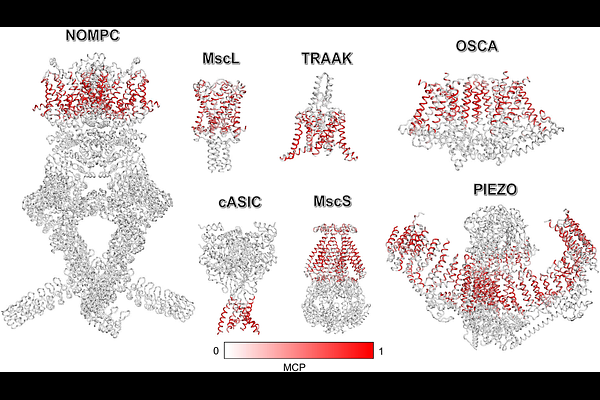Improved Anisotropic Network Models for Membrane Protein Dynamics and Mechanosensitive Ion Channels

Improved Anisotropic Network Models for Membrane Protein Dynamics and Mechanosensitive Ion Channels
Han, Z.; Wang, L.; Song, C.
AbstractMechanosensitive (MS) ion channels are crucial for translating mechanical stimuli into cellular responses; however, their dynamic properties pose significant challenges for experimental investigations. This study introduces two enhanced Anisotropic Network Models (ANMs) that incorporate Membrane Contact Probability (MCP) to more effectively capture the influence of the cell membrane on protein dynamics. MCP-ANM and MCP-mANM (multiscale ANM) outperform traditional ANM models that do not explicitly consider membranes when predicting the flexibility of various types of membrane proteins. Furthermore, by integrating MCP-mANM with Perturbation Response Scanning (PRS), we are able to efficiently simulate the conformational changes of MS proteins subjected to different mechanical forces. This methodology allows for the examination of various gating mechanisms, including force-from-lipids and force-from-tether, across multiple MS ion channels such as NOMPC, MscS, and PIEZO. The calculated mechanosensitivity of the MS channels aligns well with the experimental findings. These results demonstrate the effectiveness of MCP-incorporated ANM in linking mechanical stimuli to protein dynamics, providing a reliable and efficient framework for understanding the mechanotransduction and gating mechanisms of MS ion channels.